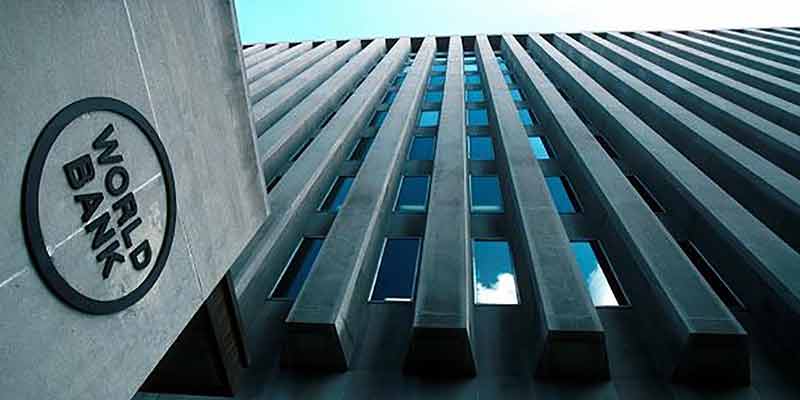- India
- Jun 20
World Bank approves $150-million loan for Resilient Kerala programme
The World Bank’s Board of Directors have approved a $150 million loan to support the Resilient Kerala Programme to continue strengthening the state’s preparedness against natural disasters, climate change impacts, and disease outbreaks.
This additional financing will further deepen Kerala’s resilience in the critical areas of coastal erosion and water resource management.
This financing complements the Bank’s earlier investment of $125 million and the overall support of the two projects is expected to protect nearly 5 million people from the impacts of floods.
Resilient Kerala Programme
• Kerala is highly vulnerable to natural disasters and prone to the effects of climate change, given its location along the southern Indian coast.
• In 2021, floods and landslides in the state led to a number of deaths and damages of around $100 million. Recurring disasters such as these have left devastating impacts on the livelihoods of vulnerable groups, especially women farmers and fisherwomen.
• About 45 per cent of Kerala’s 580-km coastline is eroding due to sustained levels of urbanisation and deforestation. Heavy rainfall wreaks havoc in the upland districts and rivers of the Pamba river basin, including in the Idukki district where the river starts.
• Studies have also shown that forest cover here has fallen by over 44 per cent between 1925 and 2012, while settlements have increased by 400 per cent.
• After the devastating floods and landslides of 2018, the World Bank had invested in building Kerala’s capabilities to respond to shocks to the state’s economy and prevent the loss of lives, assets, and livelihoods.
• The Resilient Kerala Programme will focus on two key areas. First, it will incorporate disaster risk planning in the master plans of urban and local self-governments to ease financial constraints on the state government when faced with unexpected shocks.
• Second, it will help make the health, water resources management, agriculture, and road sectors more resilient to calamities.
• The programme supports important policy and institutional reforms in the state, including improved management of the Pamba river basin, sustainable and climate-resilient agriculture, risk-informed land-use. and disaster management planning at local levels.
• Additional resources will now address hotspots and vulnerable coastal erosion sites where immediate attention is needed.
• It will also help develop an integrated river basin management plan for the Pamba river basin and support restoration of rivers and lake embankments to minimise flood damages in future.
• The project will help the state develop a climate budget and a roadmap to help fill gaps in the state’s open data and digital systems to reduce people’s vulnerability to natural hazards.
World Bank
• On July 1, 1944, as the battles of the Second World War raged in Europe and the Pacific, delegates from 44 countries met in Bretton Woods, New Hampshire to participate in what became known as the Bretton Woods Conference.
• Their purpose was to agree on a system of economic order and international cooperation that would help countries recover from the devastation of the War and foster long-term global growth.
• At its conclusion, the conference attendees produced the Articles of Agreement for the International Bank for Reconstruction and Development (soon called the World Bank) and the International Monetary Fund (IMF).
• The World Bank is like a cooperative, made up of 189 member countries. These member countries, or shareholders, are represented by a Board of Governors, who are the ultimate policymakers at the World Bank.
• Generally, the governors are member countries’ ministers of finance or ministers of development. They meet once a year at the Annual Meetings of the Boards of Governors of the World Bank Group and the IMF.
• The World Bank Group is a unique global partnership with five institutions working for sustainable solutions that reduce poverty and build shared prosperity in developing countries.
Five institutions:
i) The International Bank for Reconstruction and Development: IBRD is a global development cooperative owned by 189 member countries. As the largest development bank in the world, it supports the World Bank Group’s mission by providing loans, guarantees, risk management products, and advisory services to middle-income and creditworthy low-income countries, as well as by coordinating responses to regional and global challenges.
ii) The International Development Association: IDA helps the world’s poorest countries. Established in 1960, IDA aims to reduce poverty by providing zero to low-interest loans (called “credits”) and grants for programmes that boost economic growth, reduce inequalities, and improve people’s living conditions.
Together, IBRD and IDA make up the World Bank.
iii) International Finance Corporation: Established in 1956, IFC is the largest global development institution focused exclusively on the private sector. It helps developing countries achieve sustainable growth by financing investment, mobilising capital in international financial markets, and providing advisory services to businesses and governments. Although part of the Bank Group, IFC is a separate legal entity with separate Articles of Agreement, share capital, financial structure, management, and staff.
iv) Multilateral Investment Guarantee Agency: MIGA was created in 1988 to promote foreign direct investment into developing countries to support economic growth, reduce poverty, and improve people’s lives. MIGA fulfills this mandate by offering political risk insurance (guarantees) to investors and lenders.
v) International Centre for Settlement of Investment Disputes: ICSID provides international facilities for conciliation and arbitration of investment disputes.
Manorama Yearbook app is now available on Google Play Store and iOS App Store

